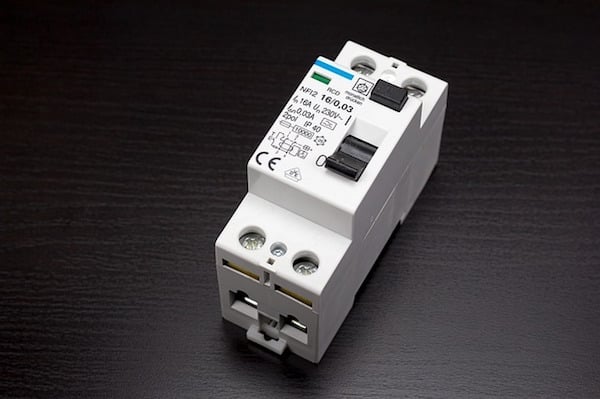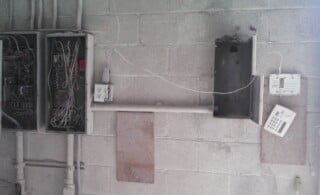
Circuit breakers are a vital part of home safety. A basic understanding of how a circuit breaker works will help you troubleshoot any electric problems and help you determine when it’s time to call an electrician.
The electric current that enters your home can be enough to kill a person without resistance. Appliances that connect to this current offer resistance that mitigates this current (this is only what makes the appliances work). The electric current enters the home through a hot wire and is channeled into the Earth through the neutral wire. The electric current, however, runs across the circuit meaning it rapidly changes direction.
The different electrical appliances, together they’re called the “load,” offer a constant resistance that keeps the current at safe levels. If one of these appliances overheats, it can melt the hot and neutral wires and cause them to touch. When the two wires touch the resistance of the appliance no longer controls the current and the wires will grow hot and possibly lead to a fire. The circuit breaker detects this surge in current and opens the circuit, cutting the electricity to that appliance or area of the home.
Troubleshooting
One of the most common situations occurs when the electricity goes out in a certain area of the home but the breaker doesn’t seem to have opened the circuit. A breaker switch can sometimes open a circuit without its mechanical handle flipping off. You should first try to manually switch the breaker off and then back on. It’s also possible the current was interrupted somewhere other than the breaker due to faulty wiring. In this case, an electrician will probably need to come, run tests, and determine the nature of the open circuit and where the break has occurred. You should never attempt to replace a circuit breaker switch unless you have electrical expertise. Improperly replacing a switch can easily lead to much larger problems in your electrical wiring.
Ready to start your circuit breaker?
Find ProsFuses
Fuses are generally cheaper and have better response times than circuit breakers. They are also increasingly going out of fashion. Most homeowners prefer the convenience of circuit breakers which, unlike fuses, don’t require replacements. Circuit breakers also create separate circuits for specific areas and appliances in your home, allowing you to retain much of your electrical power when a single circuit is tripped. Higher performance breakers use sensitive electromagnets. These breakers are competitive with the response time of fuses, cutting down on the risk of electrical sparks. Electromagnetic breakers tend to be more expensive.
Ground-Fault Circuit Interrupters (GFCI)
While breakers will protect power surges in electrical wiring, preventing electrical sparks, but they do not prevent unintentional ground-faults that cause severe electrical shocks, burns, and lethal electrocutions. Electricity in your home has a bidirectional flow. This current should remain constant. When an exposed wire touches an appliance that appliance becomes electrically charged. If a person touches that appliance they create an intentional ground that causes the current to spike and begin to drain from the closed circuit into this new grounding. A GFCI detects this electrical drain and immediately opens the circuit. More than two-thirds of household electrocutions can be prevented by this inexpensive device.
 Powerful Electrical Upgrades
Powerful Electrical Upgrades  Ceiling Fan Installation
Ceiling Fan Installation  Tips for Finding & Hiring an Electrician
Tips for Finding & Hiring an Electrician  Electrical Box Regulations – Is There a Fire Hazard in Your Walls?
Electrical Box Regulations – Is There a Fire Hazard in Your Walls?  Feel the Power: Shocking Facts About Electricity Usage in the United States
Feel the Power: Shocking Facts About Electricity Usage in the United States 

Are You Familiar With This Topic? Share Your Experience.